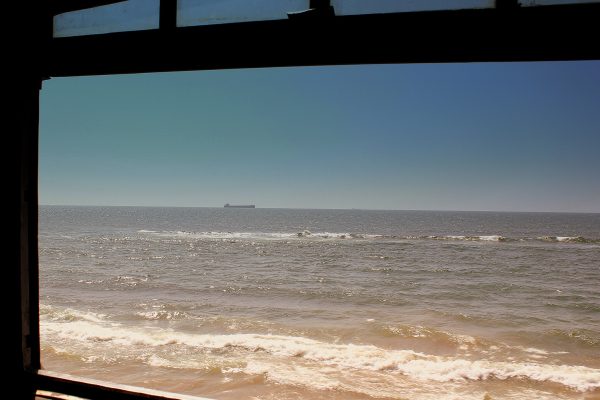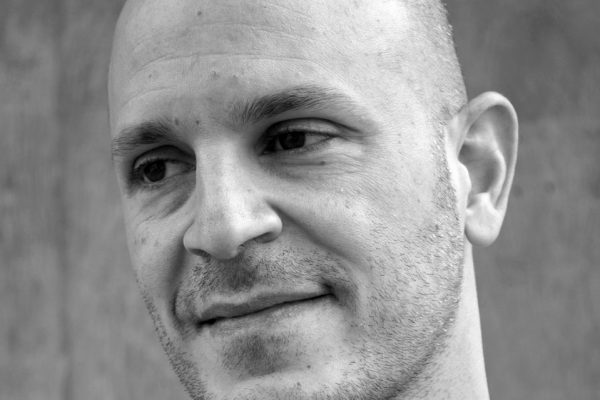1. Whodunit
A poet I know called me out of the blue–he had never called before–to ask point-blank if I was Araki Yasusada. He rattled off the reasons for his belief, and I had to admit they were persuasive.
Meanwhile, the Russian critic Mikhail Epstein has brilliantly demonstrated that Yasusada could be the work of either of two well-known Russian writers, Andrei Bitov and Dmitry Prigov (or possibly a collaboration). Both have previously invented authors–one of them Chinese, another Polish-Italian-Japanese–and both have long-announced, mysteriously unpublished “Japanese” projects. Moreover, in true conspiratologist fashion, Epstein locates both writers at a conference in St. Petersburg with the American purveyor of the Yasusada manuscripts, Kent Johnson, who is also the editor of an anthology of the new Russian poetry.
And then there is the Mexican connection: Javier Alvarez, a prominent Mexican composer living in London, claims to have been the roommate (in Milwaukee) of Tosa Motokiyu, the pseudonymous author of Yasusada, and has written a moving account of Motokiyu’s death. I was first contacted by “Yasusada” in response to an article of mine on forgeries published in a Mexican art magazine.
Marjorie Perloff makes a mistake, I think, in having “Kent Johnson” stand for the author. He/she/they should be known as the Yasusada Author, much as we refer to a Renaissance painter as the Master of the X Altar.
The point is that those who dismiss the Yasusada poems as a cruel imperialist joke are assuming the author is a white American male, which in turn is based on the assumption that anyone who is not a white Euro-male wants to speak only in an “authentic” voice. The identity of the Yasusada Author has become so refracted that we are approaching the condition where We Are All Yasusada–though I prefer to think of the author as a young woman in Senegal.
2. Hiroshima, Mon Auteur
Yasusada occurs at a moment when the Eng. Dept. has split into two contradictory “post-modernisms”: multiculturalism and deconstruction (and its spin-offs). One side wants to hear the stories that haven’t been told, and the other doubts that stories can be told. (One side, at least, still wants to read literature.) While the creation of Yasusada may pertain to the latter, his reception clearly belongs to the former.
Although this author did not exist, as such, I don’t see the connection to the “death of the author,” a theory that neither readers nor writers can tolerate. Pseudonymous authorship, even when fractured into heteronyms (Pessoa), still assigns production to single named sources. True invisibility–the “text itself”–could easily be achieved by publishing every book and magazine contribution under a different name. Writers, as far as one knows, have never practiced it: if one were that egoless, one wouldn’t be a writer.
Readers, of course, want an author attached to the text, and lately prefer an attractive author or one with a sad life (or, best of all, both). This literary parish of the American cult of celebrity becomes grotesque with the new category of “witness poetry,” a set of biographical criteria that favors verifiable experience over imagination. (It was in the context of an article in the Village Voice on Carolyn Forch’s anthology, Against Forgetting, that I made the first public revelation of Yasusada’s pseudonymity–which begat Lingua Franca, which begat Arakimania.) Yasusada simply blows the circuits of witness poetry. As I said in the Voice, he is both the greatest poet of Hiroshima and its most unreliable witness.
3. Orientalisms
Said’s book was largely concerned with the “Near” and “Middle” East (those geographical dislocations) and becomes less applicable when one approaches 20th-century Japan, a First World imperialist nation that lost the battles but arguably won the war. The Yasusada Author, even if a white American male, is no more an agent of colonialism than a Japanese country & western singer.
What is worth exploring, however, is Yasusada as the latest chapter in the American invention of Japanese poetry. The Yasusada poems are very much written in the style, not of Japanese poetry, but of American translations of Japanese poetry, including some hilarious intentional infelicities. As such, they could only have been written in recent years, for they owe a great deal to the work of Hiroaki Sato.
Sato, the most prolific translator of classical and modern Japanese poetry, has since the 1970s vigorously promoted the idea of translating haiku and tanka (and by extension, renga) as single English sentences without line breaks–the way the poems are written in Japanese. (See his monumental anthology, From the Country of Eight Islands, edited with Burton Watson, who translates with traditional lineation.) Sato’s work has been widely and unjustly reviled by the academics, but it is precisely Sato’s form of presentation (and not necessarily the Japanese poems themselves) that weirdly connect, as Perloff points out, to Ron Silliman’s “new sentence,” and that were clearly determining for the Yasusada Author.
Yasusada is not a radical poet in the context of 20th-century Japanese poetry; his poems generally could have been written when they were supposed to have been written. (And, for a more complex reaction to the war, see Takamura Kotaro’s A Brief History of Imbecility.) I agree with Perloff that the prominence given Yasusada in American magazines is both the product of an ignorance of modern Japanese poetry–part of a general disregard for contemporary world poetry–and a fascination with his biography more than his work. (The charge of criminality from the American Poetry Review proves that they publish poets and their photos, not poems.) Personally, I found the work far more interesting, and full of brilliant details, after I learned that Yasusada was an invention. That is, I prefer “Araki Yasusada” to Araki Yasusada as I prefer Paterson to Paterson.







